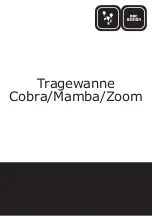
4: Advanced Operations
The following command enables the Status trap using the unit’s absolute name:
SLP: set trap unit status .a on<Enter>
The following command enables the Status trap for the unit named Florida_HQ_1:
SLP: set trap unit status Florida_HQ_1 on<Enter>
Note:
Enabling lower hierarchical traps automatically enables traps of higher
hierarchical value: i.e. enabling an Outlet Status trap automatically enables
the Infeed and Unit Status traps for that outlet. Conversely, if a Unit Status
trap is disabled, all associated Infeed Status & Load and Outlet Status traps
will be disabled.
Enabling or Disabling a Load trap
The Set Trap Infeed Load command is used to enable or disable an Infeed Load trap.
To Enable or Disable a Load trap:
1. At the command prompt, type
set trap infeed load
, followed by the infeed
name, and
on
or
off
. Press
Enter
, or
2. Type
set trap infeed load all
, followed by
on
or
off
and press
Enter
.
Examples
The following command enables the Load trap using the unit’s absolute name:
SLP: set trap infeed load.aa on<Enter>
The following command disables the Load trap:
SLP: set trap infeed load all off<Enter>
Note:
Enabling lower hierarchical traps automatically enables traps of higher
hierarchical value: i.e. enabling an Infeed Load trap automatically enables the Infeed
and Unit Status traps for that infeed
.
Setting the Infeed Load limit
The Set Trap Infeed Loadhigh command is used to set the upper load limits for an
input feed.
To set the infeed load limit:
1. At the command prompt, type
set trap infeed loadhigh
, followed by the
infeed name, and a value from 0 to 255 in amperes. Press
Enter
.
Example
The following command sets the infeed load limit for the infeed to 25 amperes, using
the infeed’s absolute name:
SLP: set trap infeed loadhigh.aa 25<Enter>
Enabling or Disabling a Change trap
The Set Trap Outlet Change command is used to enable or disable an Outlet
Change trap.
SecureLinx SLP Remote Power Manager
74
















































